
|
|
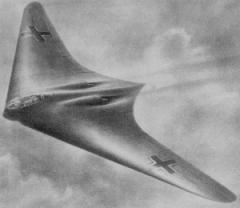
|
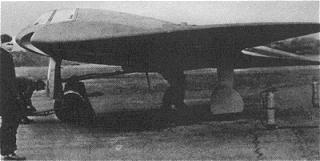
|
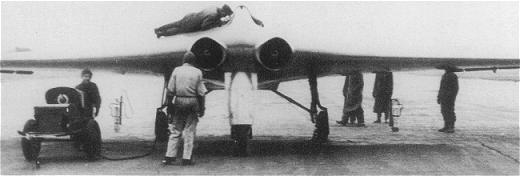
|
|
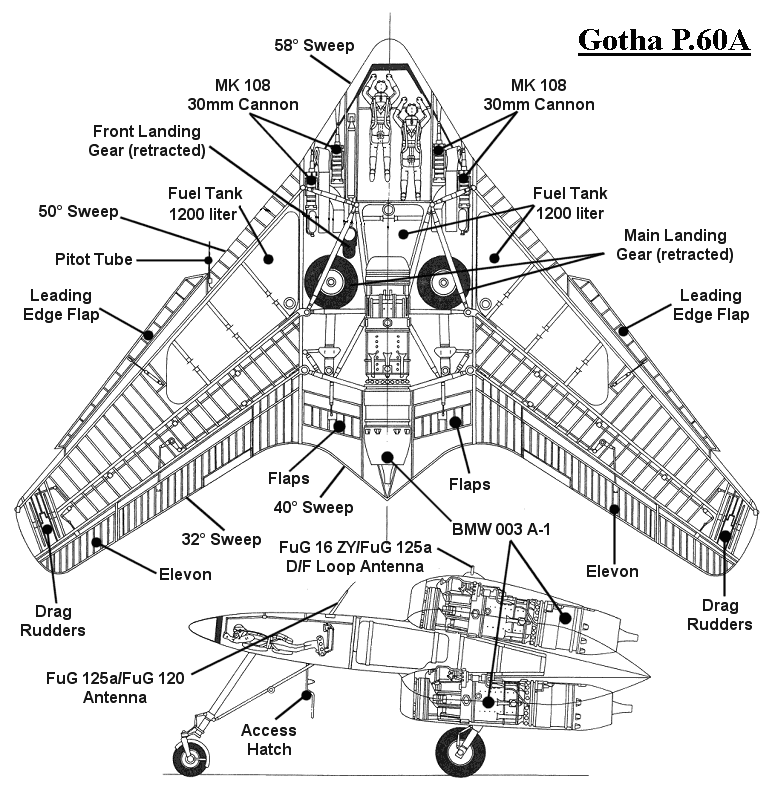
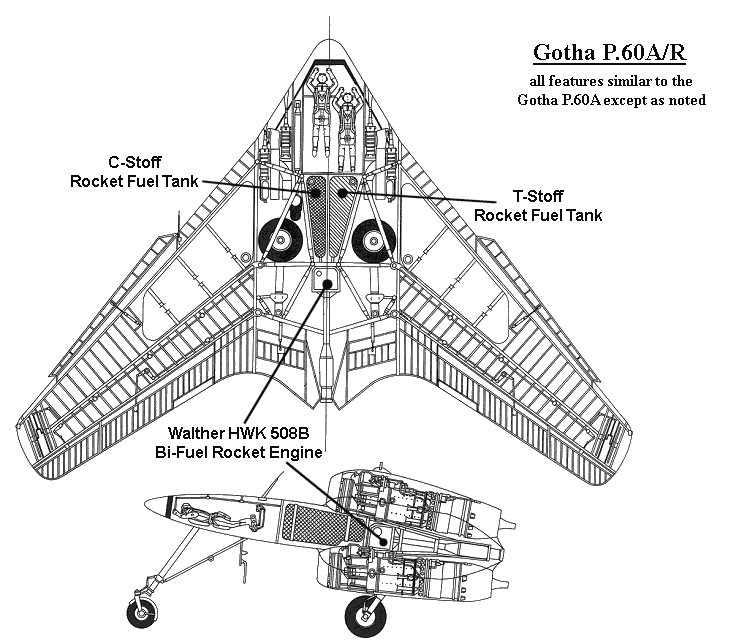
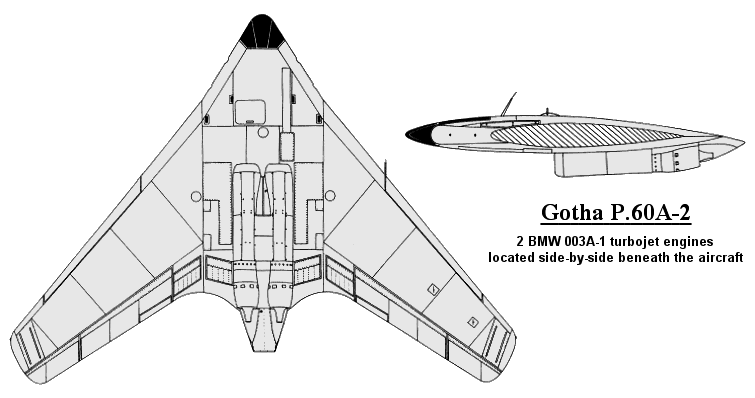
Gotha Go P.60A Drag Rudder System
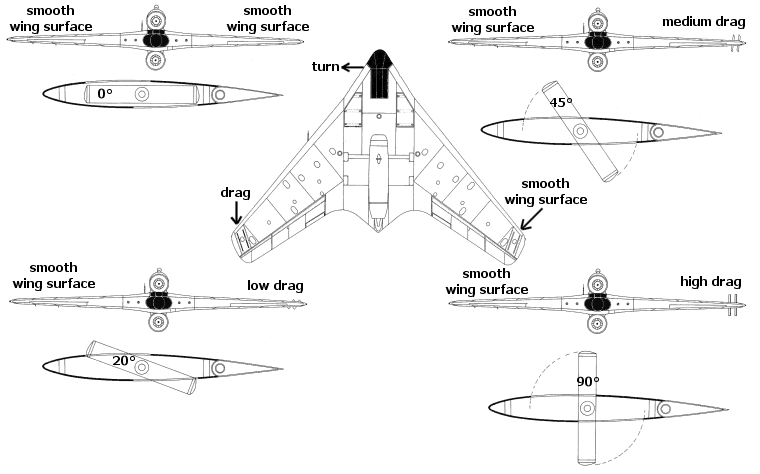
Gotha Go P.60A Details
(click on an image to open a larger view in a new browser window)
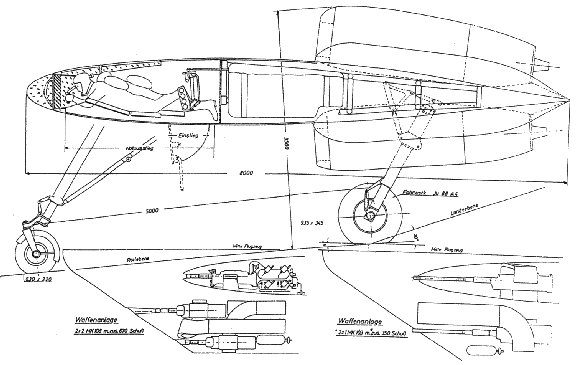
|
|
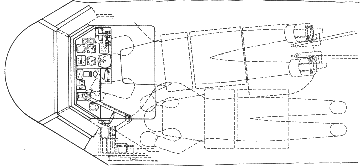
|
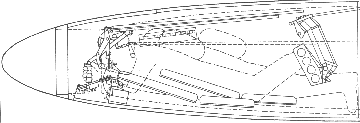
|
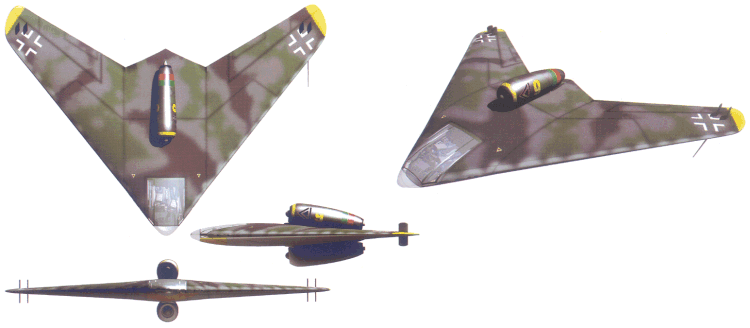 Gotha Go P.60A by Andreas Otte
Gotha Go P.60A by Andreas OtteMore Gotha Go P.60A art by Andreas Otte can be found here
Top 5 drawings: Gotha Bats by Justo Miranda & Paula Mercado
Detail drawings and color 3-view: Gotha P.60 by David Myhra
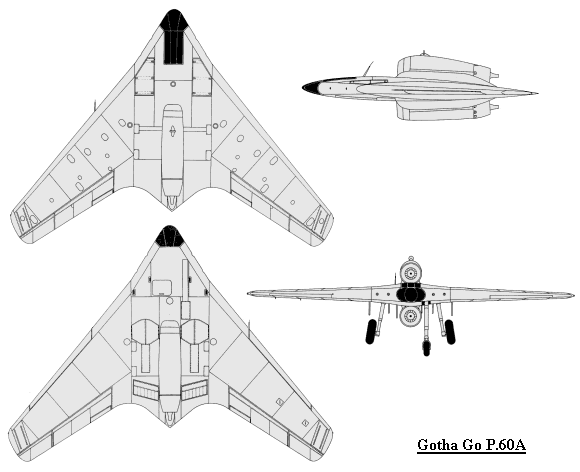 In August 1944 the Gotha Aircraft
Company was given the job of series production of the Horten brothers'
Ho IX
all-wing fighter, which would be known as the Horten
Ho 229
. After receiving the plans and design data, Gotha engineers found
some areas for improvement. The Ho 229
was limited in space to install new equipment or to add more crew members.
More importantly, since the engines were to be enclosed in the
wing, different engines could not be fitted without extensive aerodynamic
testing, which was not possible time wise considering the worsening
war situation for Germany.
In August 1944 the Gotha Aircraft
Company was given the job of series production of the Horten brothers'
Ho IX
all-wing fighter, which would be known as the Horten
Ho 229
. After receiving the plans and design data, Gotha engineers found
some areas for improvement. The Ho 229
was limited in space to install new equipment or to add more crew members.
More importantly, since the engines were to be enclosed in the
wing, different engines could not be fitted without extensive aerodynamic
testing, which was not possible time wise considering the worsening
war situation for Germany.